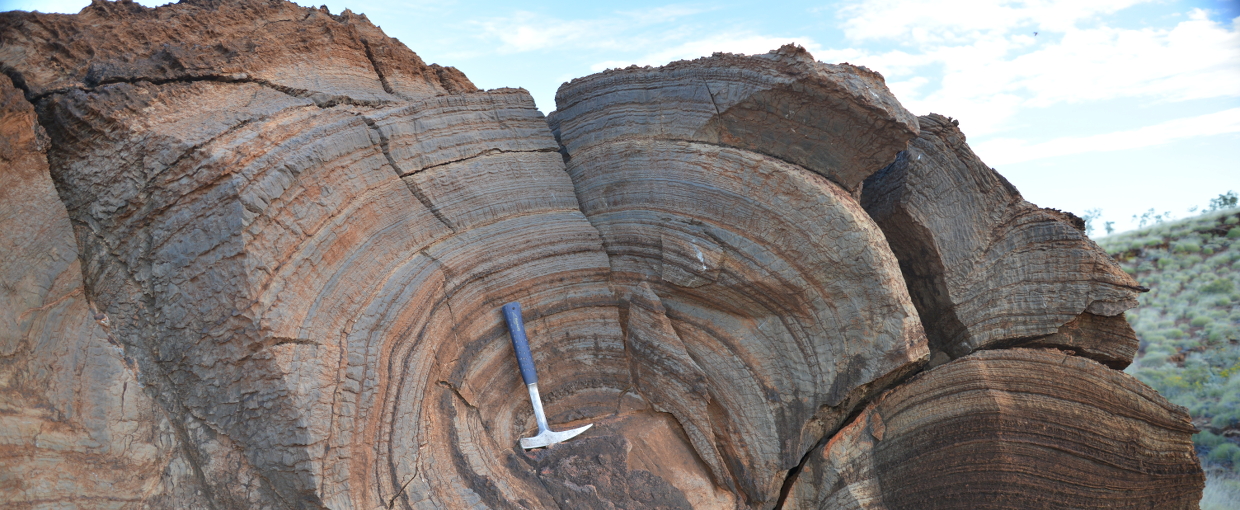-
Earth’s ancient atmosphere was half as thick as it is today
June 07, 2016 / Written by: Hannah Hickey
One of the lava flows analyzed in the study, from the shore of Australia’s Beasley River. Gas bubbles that formed as the lava cooled, 2.7 billion years ago, have since filled with calcite and other minerals. The bubbles now look like white spots. Researchers compared bubble sizes from the top and bottom of the lava flows to measure the ancient air pressure.
The layers on this 2.7 billion-year-old rock, a stromatolite from Western Australia, show evidence of single-celled, photosynthetic life on the shore of a large lake. The new result suggests that this microbial life thrived despite a thin atmosphere.The idea that the young Earth had a thicker atmosphere turns out to be wrong. New research from the University of Washington uses bubbles trapped in 2.7 billion-year-old rocks to show that air at that time exerted, at most, half the pressure of today’s atmosphere. Read the full article from The University of Washington.
The study, “Earth’s air pressure 2.7 billion years ago constrained to less than half of modern levels,” was published in the journal Nature: Geoscience. The research was supported by the Exobiology and Evolutionary Biology and NASA Astrobiology Institute elements of the NASA Astrobiology Program.
Additional Links
Earth’s ancient atmosphere was half as thick as it is today (sciencemag.org)Source: [University of Washington]
- The NASA Astrobiology Institute Concludes Its 20-year Tenure
- Global Geomorphologic Map of Titan
- Molecular Cousins Discovered on Titan
- Interdisciplinary Consortia for Astrobiology Research (ICAR)
- The NASA Astrobiology Science Forum Talks Now on YouTube
- The NASA Astrobiology Science Forum: The Origin, Evolution, Distribution and Future of Astrobiology
- Alternative Earths
- Drilling for Rock-Powered Life
- Imagining a Living Universe
- Workshops Without Walls: Astrovirology